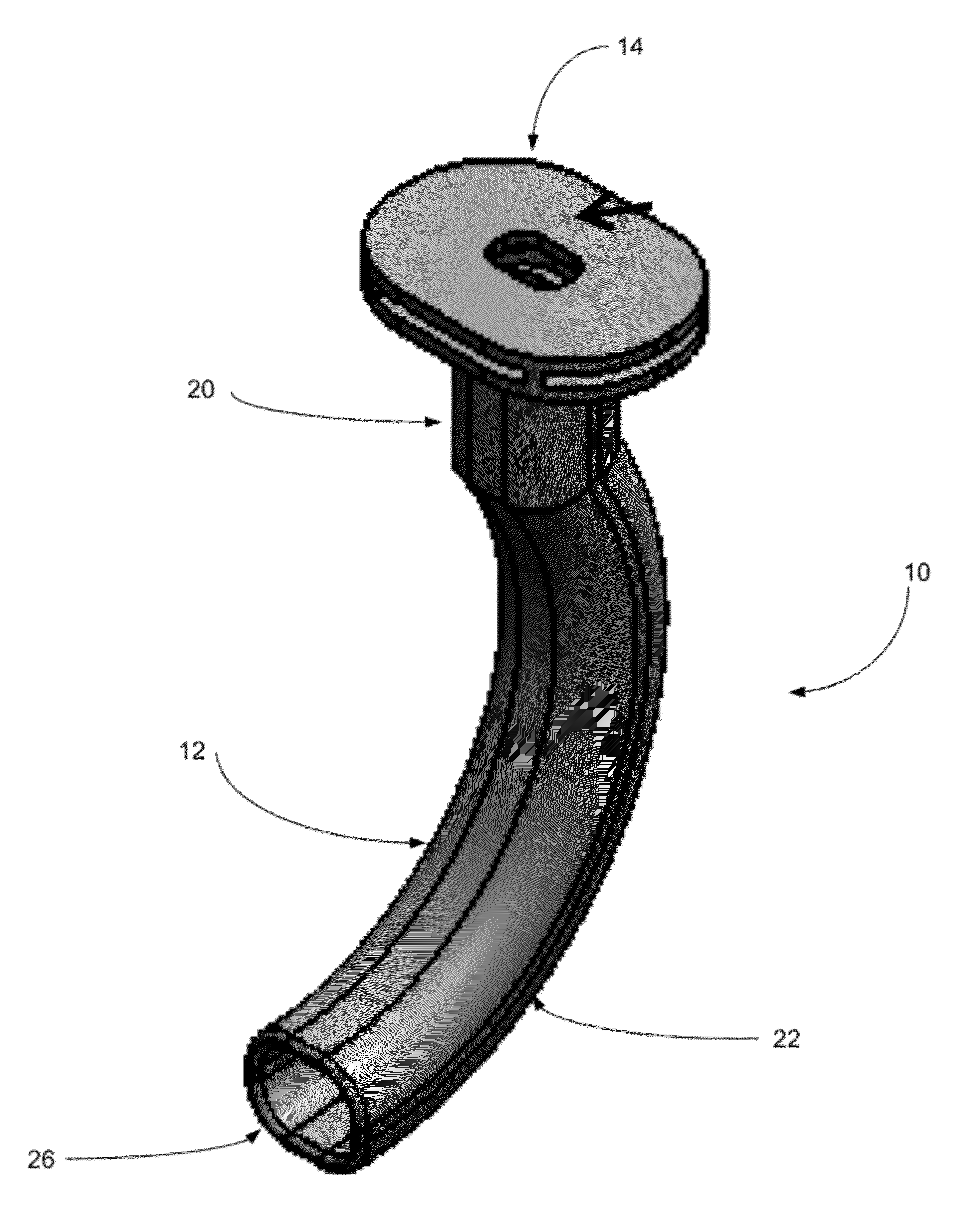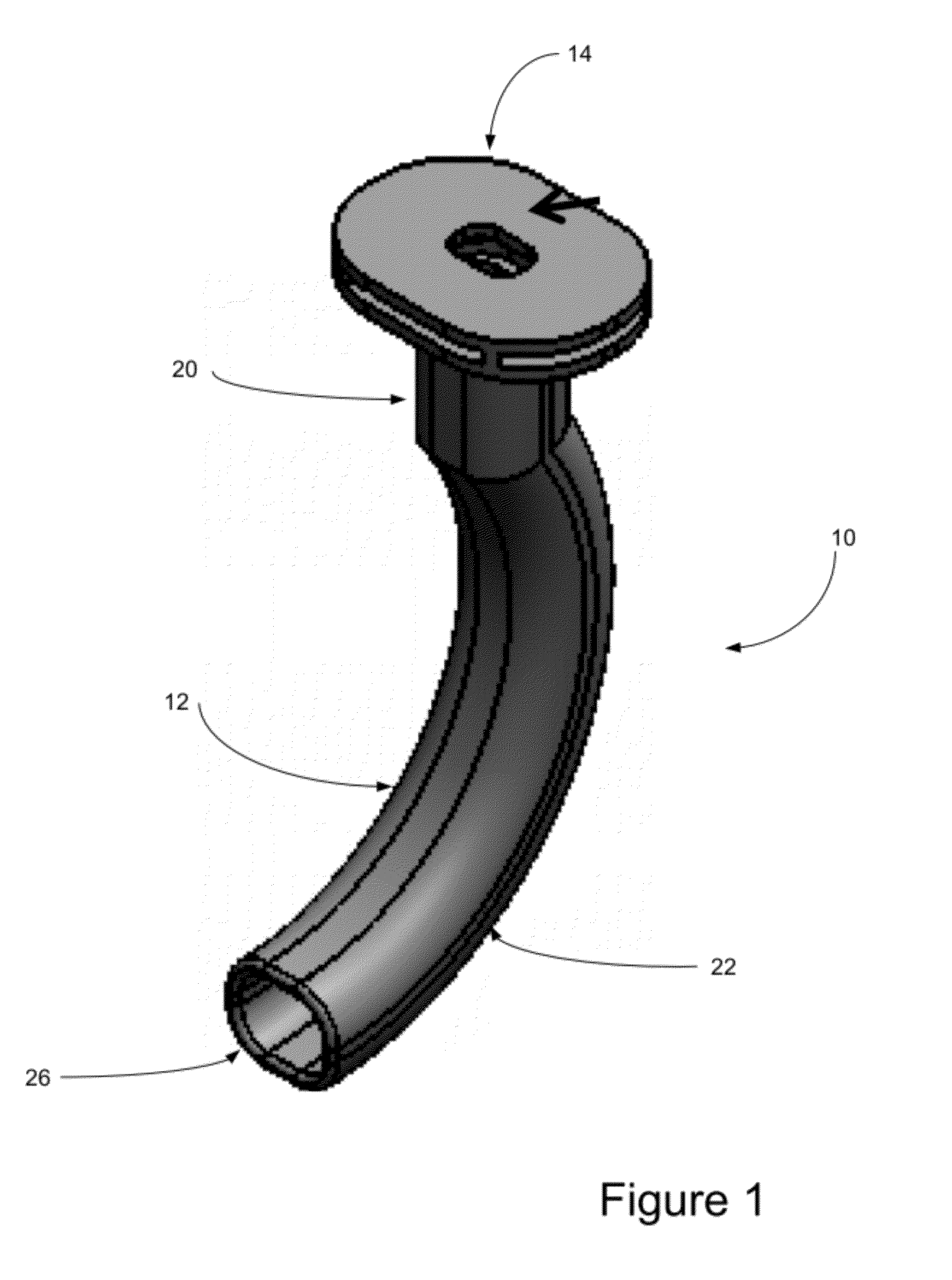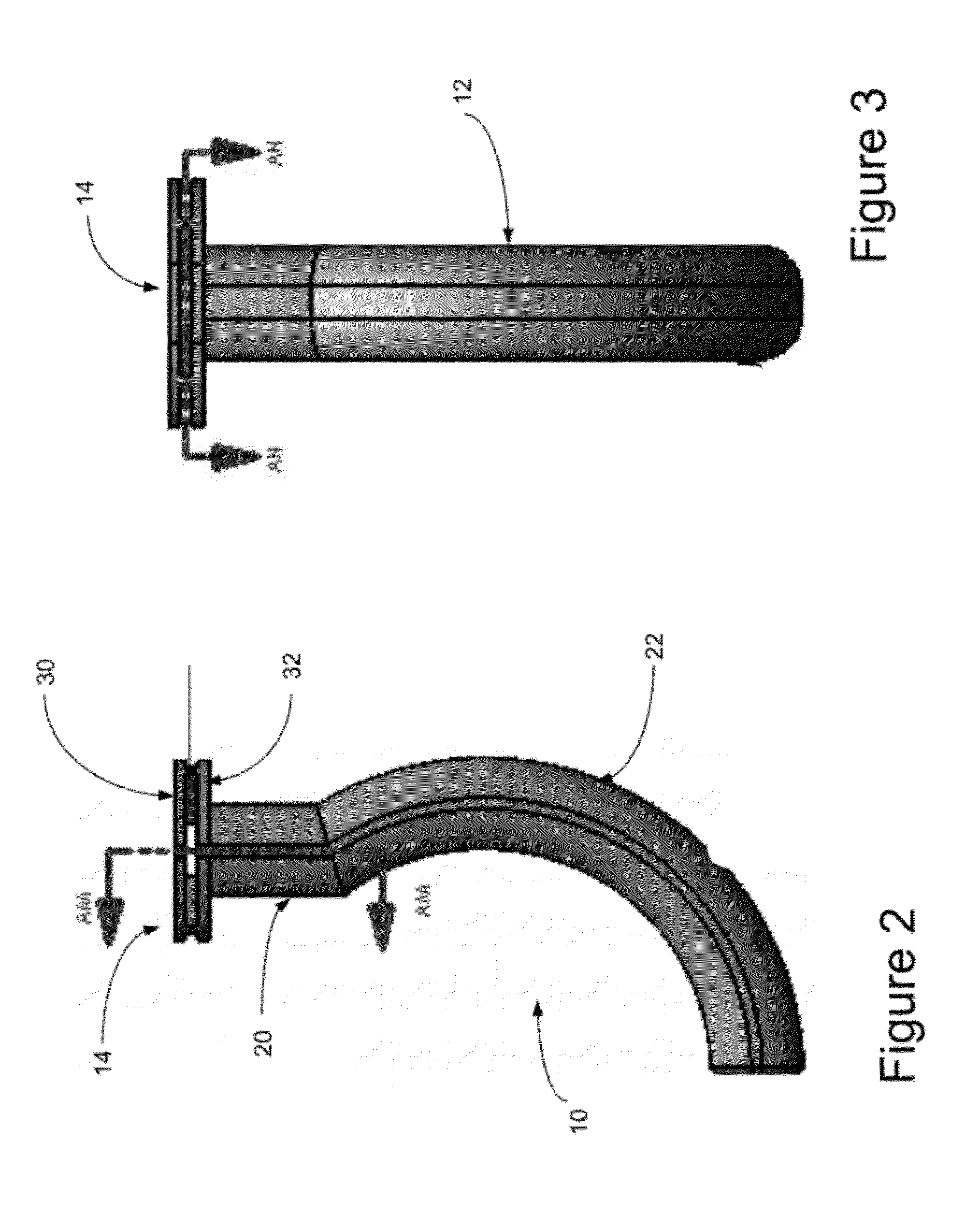Oropharyngeal and nasopharyngeal airway having a breathing indicator
a technology of oropharyngeal and nasopharyngeal airway, which is applied in the direction of inhalators, medical devices, other medical devices, etc., can solve the problems of difficult to ascertain whether the person is effectively breathing, the patient may not be monitored as closely with respect to the continued operation of the device, and certain problems
- Summary
- Abstract
- Description
- Claims
- Application Information
AI Technical Summary
Benefits of technology
Problems solved by technology
Method used
Image
Examples
Embodiment Construction
[0057]While this disclosure is susceptible of embodiment in many different forms, there is shown in the drawings and described herein in detail a specific embodiment with the understanding that the present disclosure is to be considered as an exemplification and is not intended to be limited to the embodiment illustrated.
[0058]It will be understood that like or analogous elements and / or components, referred to herein, may be identified throughout the drawings by like reference characters. In addition, it will be understood that the drawings are merely schematic representations of the disclosure, and some of the components may have been distorted from actual scale for purposes of pictorial clarity.
[0059]Referring now to the drawings and in particular to FIG. 1, an oropharyngeal airway is shown generally at 10. Typically, such airways come in a number of differently sized and shaped airways so as to accommodate the anatomical features of any number of differently sized individuals. In...
PUM
 Login to View More
Login to View More Abstract
Description
Claims
Application Information
 Login to View More
Login to View More - R&D
- Intellectual Property
- Life Sciences
- Materials
- Tech Scout
- Unparalleled Data Quality
- Higher Quality Content
- 60% Fewer Hallucinations
Browse by: Latest US Patents, China's latest patents, Technical Efficacy Thesaurus, Application Domain, Technology Topic, Popular Technical Reports.
© 2025 PatSnap. All rights reserved.Legal|Privacy policy|Modern Slavery Act Transparency Statement|Sitemap|About US| Contact US: help@patsnap.com



